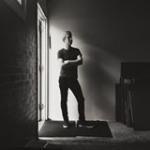Leaderboard
Popular Content
Showing content with the highest reputation on 09/05/2014 in all areas
-
There is never going to be focus peaking through the hacks, right now they have no way to program things for themselfs, they just modify the existing code.1 point
-
Nikon D5200 review
terozzz reacted to DevonChris for a topic
I don't miss focus peaking on the D5200, though it would be good if it was available. I have developed a workflow when shooting with the 5200 that is starting to get really good results. This is a summary of high I take static shots using AiS lenses which are great because you can monitor aperture changes real time in live view. 1) Check live view to get approximate iris value, moving aperture ring accordingly 2) Get approximate focus in live view and then magnify image for accurate focussing 3) Take photo and view it with highlighting enabled to rapidly check for blown out highlights 4) Change aperture, if required to protect highlights. If not start video recording I always use 24 fps, 1/50th shutter speed and Tiffen ND's with the camera set to Natural profile. I set ISO manually to the lowest possible (100, if I can).1 point -
Iscorama 2001 question
Dave Reeve reacted to Bioskop.Inc for a topic
Dave, i wouldn't worry about this too much, as anamorphics aren't a precise science & the stretch factor is always a ball-park-token-figure - its part of the charm/look that anamorphics give to an image. The stretch factor can change due to various factors - I've noticed different focal length taking lens can affect the stretch on some anamorphics & also where abouts you are on the focus scale can also play a role too (i.e. being @ infinity can give a different stretch than @ 2m). Pick a factor you're happy with and stick with it, as this could quite easily drive you insane - I just go with 2.66:1, as i'm not after perfection, i'm after the anamorphic look.1 point -
Market for DSLRs shrinking dramatically and why Canon / Nikon are to blame
dafreaking reacted to indianajones for a topic
Andrew, I love your site, but I have to disagree. You *are* speculating with the facts, we all are. No one is arguing that sales are down, we're arguing about why sales are down. On Oct 26, 2013, you wrote: "Consumer digital camera sales are down 36% this year. Why? I think there are four reasons. Smartphones Satisfaction with current DSLRs Lack of innovate products Global economic downturn" Today you wrote: "Now in an era of falling shipments both companies have blamed smartphones and the world economy. This is completely unacceptable." Just a year ago, you agreed in large portion with Nikon and Canon, but now you find those conclusions unacceptable. Yet I contend that the points you now reject *are* the core reasons why the market has collapsed. Nikon and Canon spent the last 10 years feeding the market with successively-lower cost product that improved substantially annually. Unfortunately for them, technology and economics has caught up with them and now everyone has a smartphone that does probably 90% of everything the average buyer will ever do with a camera, and they likely aren't willing to pay $600 to get that extra 10%. Do you disagree with last statement (of opinion)? It's not too different from the computer market. After years and years of increasingly powerful and more capable desktop computers with increasingly productive features, most people now have more computing power than they'll ever use, and they've stopped buying computers. Instead, they're buying smaller and smaller devices, because even those devices are powerful enough to meet most of their computing needs. The smartphone has done that to the digital camera business (and the computer business!). What possible innovations could be performed on the desktop computer that would bring sales back to the good old days when most people are already happy with their tablet? The same question could be asked of the digital camera market: What innovations do you have in mind that *would* cause the average camera buyer to plunk down $1000 (or $700) on a new camera? Do you really think that if Canon and Nikon both released killer mirrorless full-frame 4:2:2 4K 240fps@1080p 14-stop DR with ND for $999 that sales would suddenly go back up to the good old days of 2012? Do you know how many people actually care about those specs? Pretty much everyone who routinely goes to this awesome website of yours, and almost no one else. Yes, there was a compliment buried in there, we all love your site and your opinions, even if we disagree.1 point -

Sony to officially reveal 4K XDCAM 'FS700-successor' on 12th September
Xiong reacted to Matthew Walsh for a topic
Highly unlikely. Super35 is "full frame" for cinema, and using a larger sensor could alienate part of their customer base. I think saying "almost all" users are putting L glass on them is a bit off base as well. I've seen (and used) a lot of EF glass on FS700s (though only some was L, and most of the time it's been Zeiss CP.2s or Canon CN-Es), but I've seen nearly as many lower end users being fine with E glass, and higher end users adapting PL glass. Most cine lenses are designed for S35 sensors. Full frame is a cool look, but it's not the standard - and there's already an A7S for that. It'll be interesting to see what they do with this camera. There's a lot more high quality competition in the marketplace than there was when the FS700 came out. Hopefully they have a few tricks up their sleeve.1 point -
Hello there (Sorry for my bad English) I'm the director of the film embedded above. To clarify many question talked about in this forum. I would have to explain how we shoot this. For the equipment, we had 3 5D Mark III with 1.2.3 Magic Lantern firmware installed with 3 Canon Cine Prime Lenses (28, 50 and 85mm.) few L lenses (50 F1.2, 24-70mm F2.8, 28-300 F3.5-5.6 and 70-200 F2.8) and Samyang (Rokinon) Cine 35mm. In term of optical quality most lenses have pretty good sharpness (to the point that most of the audience will not notice the different unless you are working in this field) as long as you keep the F/T above 4 (and less than 11). If you want to work on 2.8 or 3.5 (less than that are totally not recommended by any chance even you sharpen it up in post. If you want the soft look, it's better to use Black Pro-Mist filter or Fog instead of using lower F/T Stop) then you'll probably see a some different between each lenses. At 1.2-2.0, it'll probably be used only in certain situation and I never recommend anyone using this T/F range as it always hard to focus and the overall sharpness is bad.) for color rendition, Samyang and Canon Cine are on par with the color representation. We found that 70-200 and 28-300 have less saturation and luminance than the rest. But it's still manageable in Post-Production to get the color to match the rest. I prefer trying best to use the primes one rather than the zoom unless it's for the sake of fast background movement or really soft background. The good thing about Canon Cine comes to the 300 Degree focus ring which helps a lot in such a complicated shots (like 10-15 focus shift in one shot while dolly back and forth and do a 360 camera turn) Even that (with F3.5), My Focus puller cursed a lot (in Thai) !! For those who look for a cheaper alternative to Canon, I would suggest you to get Samyang (Rokinon) as it has a full range of lens (with 50mm coming up soon). For my point of view, Canon Cine Prime are mostly for rental companies to own and rent it out (in cheaper price than Ultra Prime/ Cooke i5 or Master Prime) and still give a good optical quality for lower budget type of film. this should help answering all the question about lenses. For 5D Mark III with magic lantern. How we lit the scene is that we trying best to lit it in the camera's histogram range. Most of the people I knew of normally didn't do a proper testing to see how far the camera can go in terms of dynamic range and color the sensor can recorded. Everything you see in the frame is designed to take the full advantage of the camera CMOS sensor (blood color, skin mock up, on set smoke to tame the contrast down and bring the dark part up and at the same time lower the highlight down, cloth and set color etc etc.) Most of the DPs wouldn't go that far to workout with the rest of the crew to bring the best out of camera and therefore don't get what they deserved to after long hard working day shooting it. and last the Post-Production Workflow. We work on CinemaDNG all the way from the onset DIT to the lab. Using MLRawviewer to check each and every footage after we change the CF card (Sandisk Extreme Pro 128GB, we have 2 of them). Then break the MLV down into CinemaDNG and send it to Davinci at the lab (which required a fast set hardware to work on it at 2K DCI) We did tried blow it up to 4K and the result is stunning as it still contain all the sharpness. I asked some dude from Canon Thailand to come and see this footage (in 4K) at the lab on the big screen and they were stun of how there little old camera are capable of. I'm pretty happy with the result though (as long as you put a lot of hard work in it to make sure you squeezed every bit of their capabilities out of the camera) Oh .... we shot our film in Thailand .... it's pretty humid and it's 37-42 degree Celsius most of the time. The camera got heated up to the point that we were worry that we might cooked it for our next meal break, but it didn't get any damage though. Hope all this information help : ) Hopefully I can post more of the stuff soon. Still 2 more days to go til I finish the film. After the lab work, I'll probably come up with the trailer that I can post once more to see the end result.1 point



